Deploying Telehospitalists Improves Metrics and Morale
Home » Deploying Telehospitalists Improves Metrics and Morale
Deploying Telehospitalists Improves Metrics and Morale
Home » Deploying Telehospitalists Improves Metrics and Morale

Home » Deploying Telehospitalists Improves Metrics and Morale
Home » Deploying Telehospitalists Improves Metrics and Morale

This 49-bed hospital in Texas has been partnering with SCP Health (SCP) for clinical services and practice management since 2009. What started with an Emergency Medicine (EM) contract grew to include Hospital Medicine (HM) as well—creating smoother operations and increased care cohesion across specialties. As hospital goals shifted and telehealth technology came into the spotlight, leadership turned to SCP again to help their clinician teams evolve and excel.
 Strengthen Hospital Medicine physician team
Strengthen Hospital Medicine physician team
 Increase schedule flexibility and satisfaction for clinicians
Increase schedule flexibility and satisfaction for clinicians
 Continue to build inter-specialty synergy and efficiency
Continue to build inter-specialty synergy and efficiency
Considering these goals, SCP’s clinical and operational leaders recommended the following plan to the multidisciplinary Joint Operations Committee (composed of EM and HM medical directors, members of hospital administration, nursing directors, and other key stakeholders):
Once approved, SCP moved forward with this robust approach—and quickly saw positive results. When the COVID-19 pandemic surged just months later, SCP was able to help the facility navigate through this unstable time—even implementing a more advanced telehealth cart to increase the efficacy of the telenocturnist.
Incorporating telemedicine into the hospitalist program served to:
By the numbers, the switch to using telenocturnists drove the following results within just a few months of implementation:
Sign up for our newsletter to receive the latest updates and exclusive content straight to your inbox.

A physician-led team of clinical specialists in emergency, hospital, and critical care medicine, supporting local clinical practices with national resources to deliver high-quality patient care in the communities we serve.
Corporate Phone: (800) 893-9698
Copyright © 2025. All rights reserved.
Please visit SCP Health’s Insurance Request Portal to submit requests related to medical malpractice liability insurance such as coverage verifications, claims history reports, and certificates of insurance. If you experience issues with the portal submission or have a question about the process, please reach out SCP Health’s Risk Management, Safety and Insurance Department at RM@scphealth.com or 337-609-1250.
By clicking the “Submit” button, you are agreeing to the SCP Heath Terms of Use and Privacy Policy
By clicking the “Submit” button, you are agreeing to the SCP Heath Terms of Use and Privacy Policy
By clicking the “Submit” button, you are agreeing to the SCP Heath Terms of Use and Privacy Policy
By clicking the “Submit” button, you are agreeing to the SCP Heath Terms of Use and Privacy Policy
By clicking the “Submit” button, you are agreeing to the SCP Heath Terms of Use and Privacy Policy
By clicking the “Submit” button, you are agreeing to the SCP Heath Terms of Use and Privacy Policy
By clicking the “Submit” button, you are agreeing to the SCP Heath Terms of Use and Privacy Policy
By clicking the “Submit” button, you are agreeing to the SCP Heath Terms of Use and Privacy Policy
By clicking the “Submit” button, you are agreeing to the SCP Heath Terms of Use and Privacy Policy
By clicking the “Submit” button, you are agreeing to the SCP Heath Terms of Use and Privacy Policy
Please provide your contact information. An SCP representative will contact you accordingly.